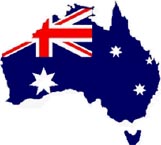Australians wake up to blood in the water
 Sydney - Shark attacks on consecutive days in Sydney in February have not stopped James McIntosh from catching waves at his favourite break at Bondi Beach.
Sydney - Shark attacks on consecutive days in Sydney in February have not stopped James McIntosh from catching waves at his favourite break at Bondi Beach.
"I'm certainly not going to stop myself surfing," he said. "It's just one of those very rare things that happens."
Those are brave words indeed. McIntosh, first to the aid of a fellow Bondi surfer, fashioned a tourniquet from a leg rope to staunch bleeding from a shredded arm.
A day earlier, at the Woolloomooloo naval base, a diver lost a hand and a leg to a shark. He, too, nearly bled to death in the water.
Attacks are rare. The last mauling at Bondi was in 1951 and there have been no fatalities on Australia's most popular beach since 1929. In Sydney Harbour itself, the last shark attack was eight years ago and the last fatality in 1963.
A week after the two-in-a-row attacks, 500 ocean swimmers were on the starting line for a 2.2-kilometre race at Malabar. Chief organizer Murray Rose said the turnout was "testimony to the culture of Australia" in what was "probably the most challenging week for an ocean swim in history."
Some say going for a dip is no more dangerous now than it ever was.
"Sharks have always been here," environmentalist Ian Kiernan said. "It's their territory."
The long-term average is one fatality a year among about 20 shark attacks. There can be two fatal attacks in a month - as there was at Bondi in 1929 - and then nothing really serious for decades.
Others argue there has been a change, that there are more sharks around Sydney, and that swimmers have to adjust their behaviour accordingly.
"These incidents are much more related to the fact that Sydney Harbour now has much larger volumes of fish, and therefore sharks, due to the ban on commercial fishing," said Fisheries Minister Ian Macdonald. "I personally would only swim at netted beaches or enclosures or harbour pools."
Just for the record, Bondi, like 51 other Sydney beaches, is netted during the summer months.
Sydney Aquarium shark specialist Amy Wilkes said murky water, and the half-light of dawn and dusk, was dangerous because it reduced visibility for sharks.
"It's generally a case of mistaken identity with sharks," she said. "And, tragic as it is, we're generally able to pull those people from the surf because the shark has realized, only too late, that it's not really the normal prey it would be going after."
Wilkes makes the point that shark nets are a misnomer: the rope mesh is not an unbroken barrier, but is there as a means of trapping and killing sharks.
Around 40 per cent of sharks are caught on the beach side of the net and not the ocean side. The netting of beaches started in 1936.
As more people enjoy the ocean, shark attacks should rise. But there's no incontrovertible evidence that they have.
Vic Peddemors, a shark biologist with the New South Wales government, said that in the past 20 years there had been no increase in the number of sharks caught at netted beaches.
The opposite view is put by Surfwatch Australia director Michael Brown. He claims there are more sharks - and they are getting bigger.
"I'm not being alarmist, but the increases aren't in the 10 per cent range or 20 per cent," he said. "I'm talking something like a 50-80 per cent increase in the past few years. We're seeing totally unbelievable numbers of sharks."
For those who need reassurance, you are still much more likely to die from a bee sting or a lightning strike - or indeed crossing the road to get to the beach - than you are as a consequence of a shark attack. (dpa)